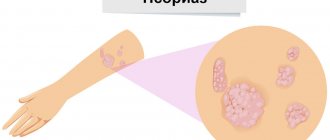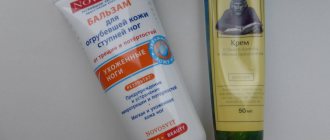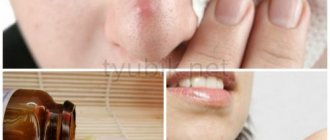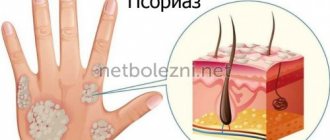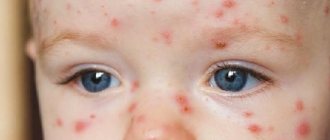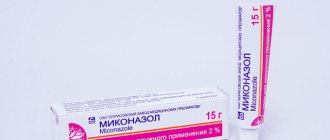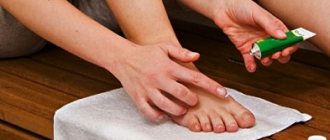Pityriasis versicolor or pityriasis versicolor is a superficial skin lesion caused by a yeast-like fungus of the genus Malassezia.
These microorganisms are representatives of typical skin microflora, are found in most people and do not cause the development of the disease. But under the influence of external or internal factors, the pathogen can transform from a non-pathogenic form into a pathogenic one: the fungus penetrates the upper layers of the skin and damages melanocytes - the cellular structures responsible for the pigmentation of the skin.
As a result, the patient develops small spots of different colors: from pale pink to red-brown, with noticeable peeling in the center. When touched, the scabs flake off easily and resemble flakes, which is what gives pityriasis versicolor its name.
What is pityriasis versicolor?
Pityriasis versicolor is a dermatological disease, most often diagnosed in people under the age of 30, while it is rare in children and the elderly. A predisposing factor to the occurrence of infection is often excessive activity of the sweat glands, so the disease often develops in the summer, at resorts and in countries with a humid, hot climate.
Lichen versicolor develops against the background of:
- chronic gastrointestinal diseases (gastritis, ulcers);
- endocrine disorders;
- autoimmune diseases;
- hormonal fluctuations, including those caused by taking oral contraceptives, pregnancy, infertility treatment;
- genetic predisposition.
Ringworm can be triggered by taking certain medications, for example, immunosuppressants, glucocorticosteroids. Uncontrolled drug therapy also often causes lichen.
A decrease in the body's natural defenses can also trigger the growth of fungal colonies.
This can lead to:
- recent serious illnesses, injuries or surgeries;
- severe vitamin deficiency;
- hypothermia of the body;
- stress;
- prolonged exposure to adverse factors (for example, work in hazardous industries, contact with chemicals and reagents);
- food poisoning;
- period of increased mental and physical stress;
- sudden climate change;
- alcohol abuse.
Among the external factors that cause tinea versicolor, wearing tight synthetic clothing in the hot season stands out. Artificial materials disrupt natural skin respiration, increase sweating, and irritate the upper layers of the skin. As a result, colonies of the fungus penetrate the epidermis and begin to actively multiply.
The most effective shampoos for ringworm
Shampoos for lichen are recognized throughout the world as an effective antifungal agent for people (adults and children), helping to restore hair in a short time by eliminating the causative agent of the disease. These drugs have a number of advantages:
- dandruff disappears on the scalp and hair;
- convenient use of bottles;
- almost complete absence of contraindications;
- the therapeutic effect occurs after a week of use;
- can be used as a prophylactic agent.
However, it is not recommended to use the product without a doctor’s prescription in order to avoid complications of the disease. They are not suitable as regular hygiene products for daily use.
Shampoo Sebozol for lichen
Sebozol is a medicinal shampoo that has proven itself to be an excellent remedy for versicolor for humans. A distinctive feature is that the active substances included in the product instantly penetrate the body and their effect continues for a long time.
The effect of the medical product is to restore the skin and structure of the hair follicles of the scalp. To achieve maximum results, you need to use at least 5 mg of the product per application, which must be thoroughly rubbed into the scalp and left for 10 minutes. After time, rinse the drug well from the head and hair.
It is recommended to use each product for two weeks. It is approved by dermatologists for use by people of different age categories, including children from one year old and women who are expecting a child, as well as patients with sensitive skin. At the same time, Sebozol must be used very carefully in case of liver diseases.
Ecoderm
Ecoderm is perhaps one of the few anti-lichen shampoos that can be bought at a pharmacy at an attractive price. The drug has proven itself to be the best, which is confirmed by the reviews of many patients of dermatological offices and specialists.
The product is of high quality, namely it is gentle on the scalp, thereby guaranteeing the absence of irritation during its use. Signs of pathology disappear after two to three weeks. An advantage when using is the absence of an unpleasant odor.
Like other drugs for fungal diseases, the drug is approved for use for prevention. Buyers note its high effect in a short time. However, Ecoderm is not suitable for severe forms of fungal diseases.
Keto plus
Keto Plus is an antiproliferative and antimycotic agent produced by an international company. Thanks to the high content of the active components zinc pyrithione and ketoconazole, the drug effectively fights dandruff.
The therapeutic result is expressed in the destruction of the pathogen. Under the influence of the medicine, the fungus stops multiplying, the condition of the skin epidermis and hair structure improves significantly. The medicine is used daily until the symptoms of the disease completely disappear. The product can be used for prophylaxis for a long time.
However, there are some restrictions. During a course of hormone-containing medications, shampoo is prohibited for use in order to avoid deterioration of the skin condition.
Nizoral
Ringworm shampoo for humans Nizoral is a cleanser containing tanning components and ketoconazole, and the high price confirms the high quality of the drug. These substances eliminate the fungus at the cellular level, completely destroying its structure. In addition, the shampoo prevents the formation of new affected areas of the skin, heals and restores existing lichen spots.
Nizoral is considered one of the best drugs that relieves people from such an ailment as lichen. The positive effect occurs after weeks of its use. To achieve the best results, you must use the product daily. The product eliminates unpleasant signs of the disease: itching, burning and flaking.
Apply the product with gentle movements for five minutes for the best result, and then rinse well with warm water. The therapeutic course is about two months. Can also be used as a prophylactic.
The product is recommended for use by specialists, both for children (even infants) and adults, including the elderly. In this case, pregnant women in the 1st and 2nd trimester should consult a doctor before use.
Mycozoral
Mycozoral is an antifungal agent containing the active substance ketoconazole. A distinctive property of the medicine is the elimination of unpleasant symptoms of the disease.
It is applied topically as follows. The product is applied in an amount of 5 mg to the painful area of the epidermis of the head, which is then thoroughly washed off. The maximum period for using shampoo is 10–14 days. Sometimes it is allowed to be used for preventive purposes - no more than two months. Frequency – 1 time per week.
Mycozoral has virtually no contraindications. However, it can only be used in consultation with the treating doctor. Rarely, an allergic reaction to the active substances occurs - burning, itching and inflammation.
Dermazol
Dermazol is a shampoo for fungal diseases on the head, including sunburn, which has a beneficial effect on the skin and hair, while relieving signs of pathology (burning, itching, flaking, excessive dryness). The effect occurs within a few days. The product has a positive effect on the functioning of the sebaceous glands.
Shampoo is used for two, sometimes three weeks. Side effects are extremely rare. An allergic reaction may occur, hair pigmentation is disrupted, excessive dryness and peeling of the epidermis.
To provide the best therapeutic effect, the drug must be applied to the scalp and scalp daily. Positive dynamics are observed in patients even after one use due to the action of active substances that penetrate deep into the affected cells, causing the destruction of the fungal infection.
Shampoo treatment occurs in a gentle manner, which allows it to be used by pregnant and breastfeeding women, as well as children. Individual intolerance is a contraindication for the use of the product.
Cynovitis
Cynovit is a company that produces a line of drugs for humans against dermatological diseases (for example, lichen), which are available in the form of hair shampoo, body gel and other products. Among buyers, these drugs have proven themselves to be the best.
The active substances included in the preparations have anti-inflammatory, antifungal, and antibacterial effects, improve the functioning of the sebaceous glands. The positive effect occurs in a short time, the symptoms of the pathology that worry the patient are relieved: itching, burning, peeling and redness. The skin takes on a matte tint.
Shampoo or gel must be well foamed before use for ease of application. Apply the products to damp skin, leave for a few minutes, and then rinse thoroughly. For best results, you need to use shampoo for at least a month.
Tar shampoo
Tar shampoo is a potent drug for various types of lichen, including ringworm and white lichen, and is also an effective remedy against other dermatological diseases. The product, proven over the years, contains a miraculous natural component - birch tar, as well as oil extracts and plant extracts that have a healing effect on damaged areas of the epidermis and hair follicles.
Shampoo properties:
- Normalization of the sebaceous glands.
- Relief of unpleasant symptoms of the disease (itching, burning, peeling).
- Destroys pathogenic fungi.
- Improving blood circulation, regenerating the skin and restoring the surface of the dermis affected by lichen.
- Fights baldness.
Due to the fact that it has a number of contraindications, it is not suitable for all patients. The shampoo should not be used by children under two years of age, women during pregnancy and breastfeeding, or if there is an individual intolerance to the components included in the product.
The therapeutic course is about two months. The shampoo is applied to damp hair and then washed off after 3 – 5 minutes. The product is used no more than twice a week. If any adverse reactions occur, stop using it.
Find out more
What does pityriasis versicolor look like?
The first symptom of the disease is the appearance of small spots, most often localized on the torso, arms, scalp or external genitalia. The rash may be accompanied by mild itching or may not cause the patient any noticeable discomfort.
The rashes do not have a sharp outline, are not inflamed and do not swell. Initially they are pink in color, but gradually change shade: from pink-yellow to brown and red-brown. The number of spots increases: the fungus spreads across the skin, occupying more and more surface area of the body. The rash may appear on the hands, legs, face, but never affects the mucous membranes, palms or feet, which is due to the special structure of the epithelium in these areas.
The rashes can increase in diameter (up to several centimeters) and merge with each other. Peeling zones appear in the center - when you touch the spot, the scales easily peel off. An atypical form of pityriasis versicolor includes pityriasis alba, in which the affected areas completely lose their pigment (become white). In this case, there may be no peeling.
A distinctive feature of pityriasis versicolor is a disorder of skin pigmentation. Fungal colonies damage melanocytes, which are responsible for the production of melanin, the substance responsible for the color of the skin. Areas of hypopigmentation are especially noticeable during tanning: the epithelium damaged by yeast remains white. This effect can persist for a long time even after recovery.
Pityriasis versicolor is prone to a chronic course and frequent relapses.
To quickly recover and avoid the unpleasant consequences of the infection, it is recommended to consult a dermatologist at the first symptoms of the disease:
- the appearance of a pink or reddish rash;
- mild itching of the skin;
- a feeling of tightness and flaking in certain areas of the skin of the torso and arms.
Tinea versicolor - causes
01.02.2021
Versicolor versicolor (another name is pityriasis versicolor) is a skin disease that was first used by Robin in 1853. It represents damage to the stratum corneum of the epidermis and is classified as fungal.
Occurrence of the disease
Many studies have shown that this disease affects about 10% of the world's population.
It has been established that lichen is more common in people living in hot countries, in places with high humidity. Middle-aged young people are more likely to get the disease than children under seven years of age and the elderly. The peak of the disease occurs at the age of twenty. Gender doesn't matter.
The causative agent of this disease is a yeast-like fungus.
The percentage that infection will occur from a patient is very small, but it does occur in life. Infection can occur through close contact with a sick person, as well as wearing someone else's clothing. Most often it appears in people predisposed to tinea versicolor , as well as in members of the same family. But it can also appear for other reasons. For example, excessive sweating, chronic diseases, oncology , tuberculosis, non-compliance with personal hygiene rules. It is also worth taking a closer look at yourself during pregnancy . A weakened immune system can also cause spots on the skin. Bad habits and the use of certain types of contraceptives also belong to this group.
These are pink to brown spots that appear on the chest , back , abdomen , arms, genitals and neck . on the palms and soles. The size of the spots changes over time, and they often grow together, covering a large area of skin. The patient's well-being does not change in any way. Sometimes lichen appears on parts of the body that are difficult to see, and itching does not always appear. Therefore, some people live with multicolored lichen and have absolutely no idea about it. A complex, self-doubt, and a desire to wear more closed clothes may appear.
Prevention and treatment of ringworm
Prevention includes a set of procedures that are aimed at preventing recurrence of the disease. You should carefully care for your body and maintain hygiene. You need to wear clothes that are made from natural materials (cotton). Patients who are predisposed to developing fungal diseases are advised to harden themselves, eat properly and regularly, and strengthen their immune system . It is advisable to examine all family members within a month to prevent the spread of the disease. It is also necessary to disinfect bedding and underwear and iron them on both sides. If possible, do not be nervous, stop physical activity for a while.
Prevention lies on the shoulders of the patient, and treatment should be supervised by a doctor .
Tests to detect ringworm:
- examination by a dermatologist of all areas of the skin;
- detection of peeling when scraping;
- Apply iodine solution to a certain area of skin. The spots will appear brighter in color;
- Carrying out an examination under a Wood's lamp. The affected skin will glow;
- diagnosis of other diseases that may cause weakened immunity , if any. For example, diabetes mellitus .
Treatment is prescribed by a doctor . This is the identification of factors that are favorable for the development of infection and their complete elimination. The prescribed treatment will depend on the patient's age, the size of the spots and their location. Antifungal agents are most often prescribed.
If frequent exacerbations of the disease occur, then a whole course of treatment is used, which lasts about several months. Complete elimination of the disease for a long time should be achieved not only with the help of personal hygiene, but also with a daily change of all clothes and underwear. To cure lichen , you need to use external remedies.
Although this disease does not harm internal health in any way, it still requires treatment. You should treat your body and health with special care.
Published in Dermatology Premium Clinic
How is pityriasis versicolor transmitted?
Pityriasis versicolor is transmitted through household contact, but this is rare: the disease is not very contagious. The causative agent of pityriasis versicolor, a fungus from the genus Malassezia, is present on the skin of most people, but does not penetrate the epithelium and does not lead to the appearance of a rash. However, under the influence of various factors, yeast transforms into a pathogenic form and begins to destroy skin cells. This process can be triggered by various factors: from excessive sweating to endocrine disorders.
Despite the low contagiousness of this type of lichen, patients are advised to adhere to some recommendations:
- do not share bed linen or towels;
- do not wear other people's clothes;
- do not visit baths, saunas, public swimming pools.
You should also take special care to disinfect the patient’s underwear, clothing and hats: wash at high temperatures (possibly boiling), iron with a hot iron, use steam treatment.
Is it possible to cure pityriasis versicolor?
With proper therapy, pityriasis versicolor is easily treated and goes away within 2-3 weeks. To do this, you need to make an appointment with a dermatologist, who will conduct an examination and prescribe additional tests.
As a rule, the diagnosis is established in the presence of a typical clinical picture, but to confirm it, the following analyzes and tests are performed:
- examination under a Wood's lamp: fungal colonies are illuminated;
- microscopic examination of the scraping: shows the presence of yeast;
- Balzer test using iodine-containing solutions.
A dermatologist may also prescribe histological studies, general blood and urine tests. Based on the results of the examinations, treatment tactics are developed.
Depending on the severity and severity of the infection and the symptoms of lichen, therapy includes:
- the use of external agents (sprays, lotions, ointments) with antifungal components. If the scalp is affected, special shampoos are prescribed;
- antifungal drugs for internal use. Prescribed to patients prone to relapses of pityriasis versicolor, or to patients with atypical manifestations of infection.
If the patient suffers from severe itching (which is extremely rare), antihistamines may be prescribed.
Symptoms of tinea versicolor
In those places where skin manifestations of the disease are observed, the number of corneocytes is three times higher. Changes in the skin color of a person infected with tinea versicolor can also be explained by the fact that the fungi colonize unevenly on the skin.
The primary site of occurrence of tinea versicolor is the mouth of the pilosebaceous follicles. Here, fungi, under the influence of provoking factors, begin to multiply, forming colonies. They use the fatty secretion produced by the sebaceous glands for their own nutrition. It contains all the fatty acids necessary for fungi.
The disease debuts with the appearance of yellowish dots on the skin, which are located near the mouths of the hair follicles. Then pinkish-yellow spots form around these points. As the disease progresses, they darken, becoming brown. Pityriasis-like scales appear on their surface. If you just look at the stain, the peeling is almost invisible. However, as soon as you scrape it, the scales immediately come off. This sign is called Besnier's sign.
So, the following symptoms will indicate tinea versicolor:
- The spots that appear on the skin can have different colors: yellow, pink, brown. As the pathology progresses, they merge together, forming large lesions with uneven contours. The initial size of the spot is 3-5 cm in diameter.
- The spots can cause itching in humans. It is rarely intense.
- If a person has been in the sun for a long time and gets a tan, the color of the spots will change. They become lighter and therefore more noticeable. In winter, the spots, on the contrary, darken. This feature of the course of the disease is also one of the reasons why this ringworm is called tinea versicolor.
- The favorite places for the fungus to localize are the shoulders, back, and stomach. Less commonly, spots appear on the neck and scalp. At the same time, a person does not lose hair on his head. They can only fall out on the body.
- Although the pathology is quite amenable to correction, sometimes it can bother a person for years, either subsiding or exacerbating again.
- As a rule, a person does not indicate any subjective symptoms. A burning sensation and pain in the affected area can be a signal of a secondary infection.
Depending on how deeply the dermis is affected and where exactly the spots are located, the following types of tinea versicolor are distinguished:
- Erythematosquamous form. The spots are located in the upper part of the body, there are no symptoms of inflammation.
- Follicular form. The spots are accompanied by the appearance of papules and pustules, which have an average size of 2-3 cm. This form of the disease is typical for people suffering from severe concomitant disorders.
- Inverted form. The spots are located in the folds of the human body.
Regardless of the form of the disease, its treatment is carried out according to the same type of scheme.
It is important to compare the symptoms of tinea versicolor with the symptoms of other diseases:
- Lichen Zhibera is characterized by the appearance of pink oblong spots on the skin. In the center of these lesions, the dermis peels off. The spots are located along Langer's lines; they themselves are surrounded by a collar of scales.
- Syphilitic roseola is characterized by pinkish spots on the skin, which become discolored when pressed on them. There is no peeling of the dermis, the spots do not merge or grow.
- It is necessary to distinguish tinea versicolor from vitiligo.
Sometimes tinea versicolor has an atypical course. In this case, the spots are located on the skin of the soles. This form of the disease is difficult to treat, and after the acute phase is eliminated, brown spots with an irregular shape remain on the feet. They are located on the heels and on the transitional fold from the sole to the toes.
In people with AIDS, tinea versicolor spots reach a size of 5 cm, while in a person with a normal immune system their diameter rarely exceeds 1 cm.
Is it possible to cure pityriasis versicolor permanently?
If you follow medical recommendations, pityriasis versicolor responds well to treatment: the rash completely disappears in 2-3 weeks. But the infection tends to become chronic: in this case, relapses occur every time sweating increases, for example, in the warm season, when traveling on vacation, or during intense physical activity.
To avoid this, you must:
- consult a dermatologist at the first signs of the disease. At the initial stage, pityriasis versicolor can be easily confused with other skin infections: tinea versicolor, seborrheic dermatitis, eczema, vitiligo, and so on. Each disease requires specific treatment, which is why it is so important to recognize the disease as early as possible;
- refuse self-medication. Uncontrolled use of medications and the use of “folk remedies” will not only not lead to a cure, but can also aggravate the course of the infection;
- follow your doctor's recommendations. This applies to both the use of prescribed medications and personal hygiene.
In this case, the patient can quickly recover from pityriasis versicolor and avoid its relapse.
Possible side effects
Therapeutic shampoos for dermatological diseases, which also include lichen, have a positive effect on the structure of the hair follicles and the epidermis of the head. Usually the drugs are well tolerated by patients.
At the same time, they can cause such side effects, especially when using hormonal drugs at the same time, which is prohibited. Such reactions include increased external signs of the disease (burning, itching, hair loss, excessive dryness).
This is why you cannot use shampoos on a regular basis. It is necessary to take a break so as not to cause withdrawal symptoms.
Is it possible to sunbathe with pityriasis versicolor?
This dermatosis is popularly called “sun fungus”: during the beach season, the yeast is activated and the disease is diagnosed most often. At the same time, the areas of the skin affected by the colonies do not tan and remain white - the patient is covered with light spots, which bring him to the dermatologist’s office.
Since pityriasis versicolor can be diagnosed during rest, patients are often interested in: is it possible to sunbathe with pityriasis versicolor? Opinions differ on this matter. Previously, quartz treatment was prescribed for the treatment of lichen versicolor: under the targeted influence of ultraviolet light, colonies of the fungus died. But now many dermatologists dispute this method of treatment.
UV radiation can be dangerous for an organism weakened by infection. In addition, the occurrence of pityriasis versicolor indicates a decrease in immune strength. Therefore, experts do not recommend exposing the skin to additional stress.
If the patient doubts whether it is possible to sunbathe with pityriasis versicolor, he is recommended to consult a dermatologist. The doctor will give recommendations taking into account the individual characteristics of the body, the severity of the disease, its form and location. If you follow medical prescriptions, the patient will avoid the complications of lichen and will be able to recover in a short time.
It should also be remembered that if the patient decides to sunbathe with pityriasis versicolor, the areas of the skin affected by the colonies will remain light: it will not be possible to get an even and beautiful tan. Therefore, it is better to first get rid of the disease, and only after that return to the beach.
Reviews of shampoos for lichen
People who have experienced lichen leave mostly positive reviews about shampoos. Thanks to the use of medications, patients got rid of the pathology forever after a short time.
At the same time, experts note the occurrence of adverse reactions in some patients who did not follow the recommendations of dermatologists. Therefore, before using shampoos, you should consult your doctor and carefully read the instructions. In addition, preventative measures will help prevent the development of shingles in the future.
Can pityriasis versicolor be cured with iodine?
Iodine-containing products are used in the diagnosis of lichen versicolor. Yeast colonies are sensitive to iodine, causing them to absorb it to a much greater extent than surrounding healthy skin. Therefore, if you apply an iodine solution to the epidermis, the affected areas will be much darker.
But many patients believe that iodine is suitable not only for diagnosis, but also for self-treatment of pityriasis. An alcohol solution of iodine is a popular antiseptic that is often used to disinfect the skin. Fungi from the genus Malassezia, which cause tinea versicolor, are sensitive to it and are partially killed upon contact with this substance, but it is impossible to completely destroy them with iodine.
In addition, an alcohol solution of iodine greatly dries already damaged skin, which can lead to various complications of dermatosis.
As a result of self-medication:
- the disease drags on - recovery does not occur, and the rash spreads to new areas of the body;
- the likelihood of relapse increases - after the rash disappears, it appears again when the immune system is weakened and is chronic;
- new symptoms are added to the symptoms of the disease: tightness and dryness of the skin treated with iodine, itching may occur.
Pityriasis versicolor can be cured with antifungal medications prescribed by a dermatologist. Special creams and ointments affect only colonies of the pathogen and do not affect healthy epithelium. Also, many products contain care components that additionally moisturize the skin, accelerate its regeneration and promote the resumption of melanin synthesis.
